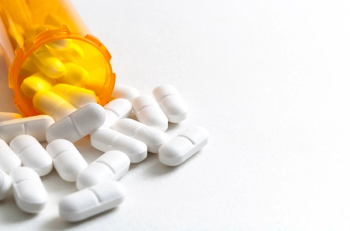
Contraceptives, STDs, and the drugstore
stockchecker on contraceptives
Contraceptives, STDs, and the drugstore
Contraceptives are typically purchased in drugstores. In fact, drug outlets produced 65% of 2001 contraceptive sales--a 2% increase over 2000s performance.
The category, as a whole, grew 2.4% last year with sales gains in both male and female contraceptives. Male contraceptives, or condoms, dominate this $235 million contraceptive category, generating nearly $214 million or 91% of sales. Female contraceptives contribute nearly $22 million to the total. These figures do not include physician-prescribed oral or implanted contraceptives. The numbers do, however, include vaginal inserts, contraceptive creams, and female condoms.
Male contraceptives
Female contraceptives
User preference is shifting the emphasis within the condom market as large size and pleasure-enhancing specialty condoms are gaining popularity. Having made their way onto drugstore shelves, these condoms are ringing up sales. Names like Trojan Brands Extended Pleasure, Extra Sensitive, and Magnum XL are giving consumers options for fit as well as texture.
Changing awareness
Although preventing pregnancy continues to be the No. 1 reason for purchasing a contraceptive, times are changing. Thanks to education efforts and media messages, young purchasers are equally aware of the role condoms play in preventing the transmission of sexually transmitted diseases (STDs). In fact, condom use among teens is decreasing the number of reported cases of many STDs.
STDs and condoms
Its a disturbing fact of modern life that STDs have become commonplace. One in five people in the United States, or roughly 76.3 million Americans, is infected with viruses that may or may not be treatable.
The only preventive measure thats 100% foolproof is abstinence. Yet for those who reject abstinence, using condoms greatly improves the chances of staying STD-free. Condom use has been proven to reduce the spread of chlamydia, gonorrhea, hepatitis B, herpes, HIV/AIDS, syphilis, and trichomoniasis. Condoms may also reduce the spread of genital warts, but only if the infected area is properly covered.
However, condoms cannot protect the sexually active user from every disease. STDs can be transmitted through oral and anal sex, as well as by the exchange of bodily fluids. Also, condoms become much less effective in preventing the spread of STDs when these contraceptives do not fit properly. Condom size is extremely important when choosing protection. Poor-fitting condoms tend to break or fall off, rendering them virtually useless.
When it comes to safety, latex condoms are rated No. 1, but for males who have latex sensitivity, other choices do exist. Polyurethane condoms are one option, offering nearly the same level of protection as latex. Natural condoms are another option. Although they are effective in limiting pregnancies, natural condoms are too porous to prevent the spread of most STDs, including HIV. Natural condoms are most effective when used by monogamous partners whose sole purpose is to prevent pregnancy.
Self-consciousness in purchasing
While purchasing condoms is not the taboo it once was, some people are still a little wary about taking these products to the front counter. To improve your customers comfort level and to promote counseling opportunities, keep this department as close to the pharmacy as possible. Also, make informational pamphlets regarding condom use and STD prevention available to your customers. Preventing pregnancy and the transfer of STDs can help save lives. The trusted pharmacist stands on the front line in this battle. Take the opportunity to speak to your customers regarding these issues when the subject arises. Wary or uninformed customers may appreciate the information and the reassurance of talking to an expert about these very personal matters.
CONTRACEPTIVES ITEMS SUMMARY
Large Dept.
Linear feet
Number of SKUs
Estimated inventory retail
Retail inventory turns
CONTRACEPTIVES--NEW ITEMS
CONTRACEPTIVES NEVER-OUT LIST
Use this partial never-out list to monitor your in-stock condition. The items listed can account for more than 50% of the dollar sales in the contraceptives subcategory. An out-of-stock on any of these items represents a significant loss of sales.
____ Delfen Foam Starter .6 oz.
____ Encare Vaginal Inserts 12
____ Gynol II Tube 3.8oz
____ Semicid Contraceptive Supp 9
____ Lifestyles Ultra Sensitive 12
____ Trojan Enz 3 lubricated
____ Trojan Enz 3 Spermicide
____ Trojan Enz 12 Lubricated
____ Trojan Enz 12 Spermicide
____ Trojan Non-Lubricated 3, 12, 36
____ Trojan Ribbed Lubricated 3, 12
Sandra Levy. Contraceptives, STDs, and the drugstore.
Drug Topics
2002;13.
Newsletter
Pharmacy practice is always changing. Stay ahead of the curve with the Drug Topics newsletter and get the latest drug information, industry trends, and patient care tips.

















































































































